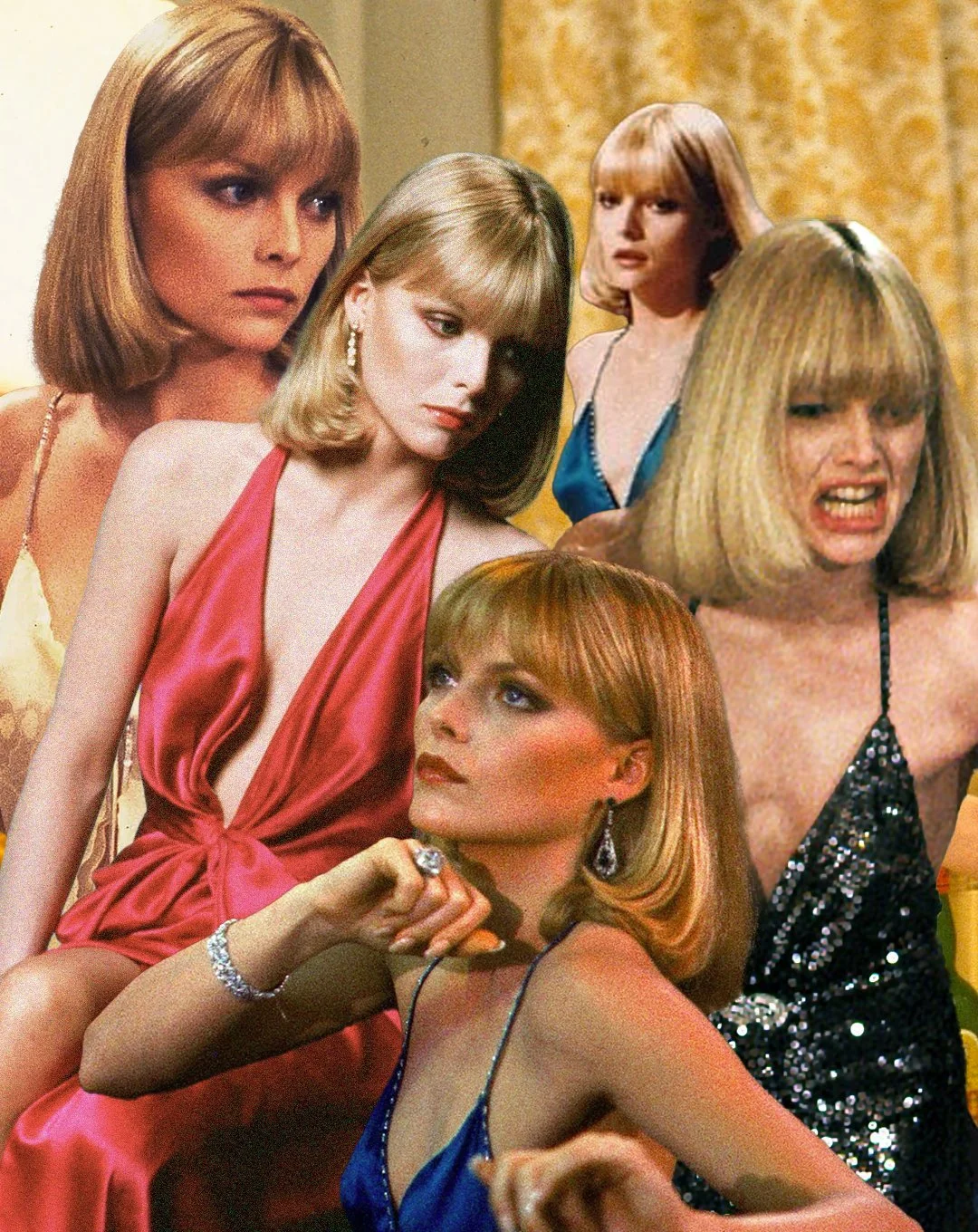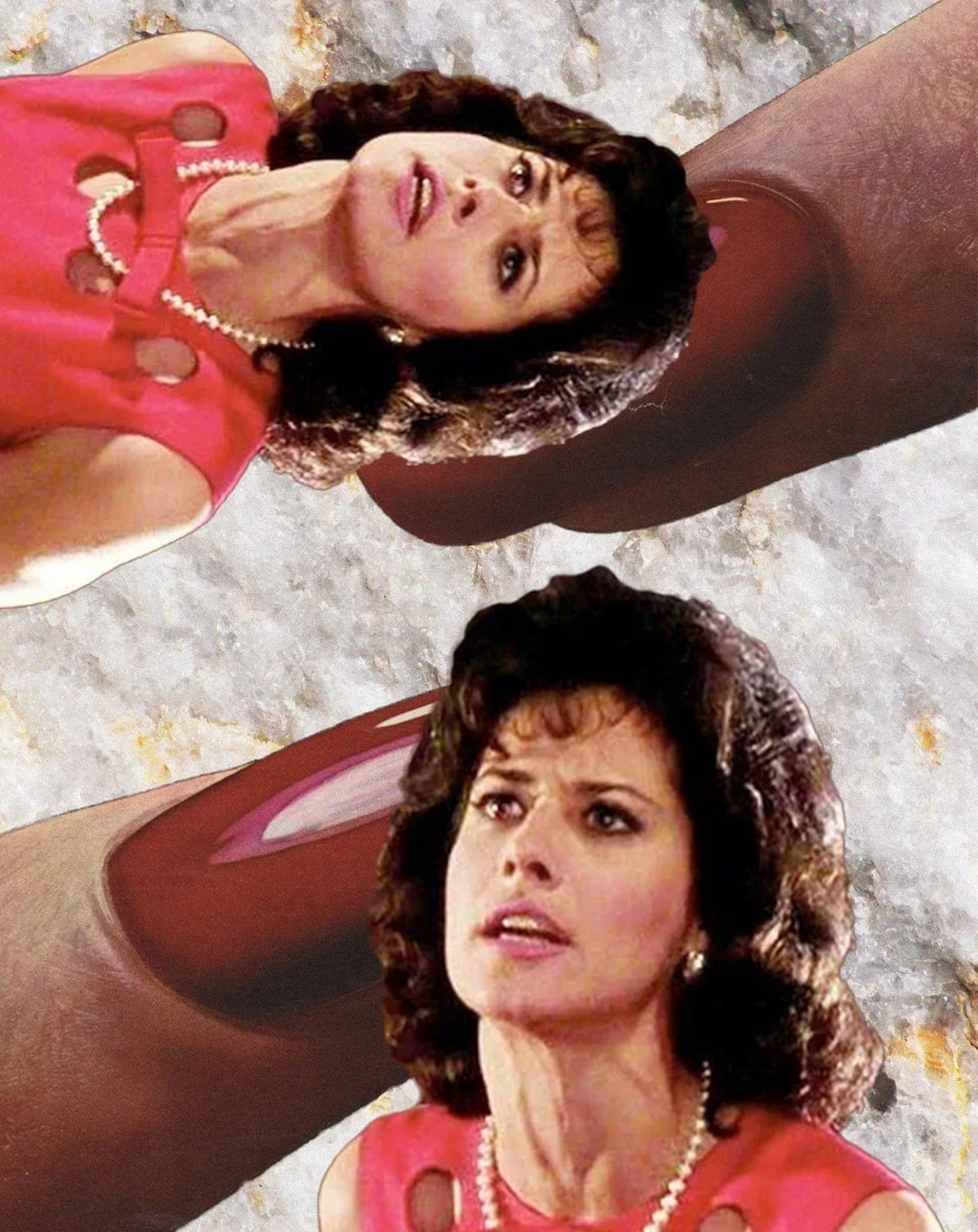Mob Wife Glamour: Gorgeous or Gaudy?
Make it stand out
One of my most favourite scenes in Goodfellas (1990), is when we first meet the wives at Mickey’s hostess party, and poor Karen Hill (Lorraine Bracco), in her pretty yellow dress, is swallowed up in the world of “bad make-up” and “cheap looks.” While Karen, who later succumbs to this world, might’ve been horrified by this roomful of flammable fabrics, I saw a roomful of fabulousness and it kickstarted my love for what I call Mob Wife Glamour. I’m talking pure maximalism: big hair, long nails, tight fitting clothes in garish colours, strong accents, loud jewellery, swearing and a lot of animal print. In the context of mob films, these women, who are mostly working class, are considered tacky, and quite often conforming to the over-the-top stereotype of Italian Americans. However, pop these looks onto the fabulously rich and watch the tacky connotations disappear.
This double standard of “it’s fabulous when the rich do it, but tacky when the poor do it,” isn’t anything new or just reserved for the mob genre. The perfect example of this double standard, and a mob wife favourite, is leopard print. When Jackie Kennedy wore the Oleg Cassini real leopard fur coat, which led to the death of about 250,000 leopards, it was considered a très chic moment in fashion history. But when the likes of Bet Lynch and Fran Drescher wear leopard print, without contributing to the endangering of a species, they’re brassy tarts. Even recently on the Real Housewives of Beverly Hills, Kyle Richards unveils leopard print carpet on her stairs, and its deemed fabulous, which it is, but if one of the New Jersey housewives, a show that has been criticised for reinforcing Italian American stereotypes and even creates Mafia sentiments with the Godfather-esque guitar in the title credits, was to have this carpet, it’d be deemed gaudy and very “New Jersey” (which has its own negative connotations towards working class women).
In the context of Mob Wife Glamour I think that the double standards of taste and maximalism comes down to the mob wives threatening the lifestyle of the richer classes. Their husbands have been able to break through the financial barriers all while holding onto a sense of community, their culture and working classness. Karen Hill proudly says her husband and the other men are blue collar guys who just hustled for their money, and despite her initial hesitations, especially towards the style, she is quickly consumed by it all through the importance of family and as soon as that his and hers walk-in wardrobe is built.
___STEADY_PAYWALL___
Karen’s style evolution is not only an important part of her character development, but also to the story as a whole as it signifies just how deep into the life her and Henry (Ray Liotta) go. Though her date-night dresses when we first meet her are bright and tight, her hair is still sensible and her casual-wear consists of comfy cardigans. This upgrades to wearing a Pucci dress as she wields a gun on a cheating Henry, and then progresses even further to concealing a gun in her knickers with nothing more than a silk kimono, a perfectly dishevelled perm and cocaine addiction. She’s even almost killed by the temptation of some Dior dresses that fell off a truck. Karen Hill is way more rock and roll than she is given credit for.
“I think the reason why I am so drawn to these ladies is because they are working class maximalists portrayed in a glamourous light.”
One mob wife who always makes best dressed lists and has cemented her place as a style icon is Elvira (Michelle Pfeiffer) from Scarface (1983). You’re probably already thinking about that teal blue silk slip dress, with the sparkly embellished straps, to die for slit and bouncing blonde bob (and maybe Al Pacino’s dancing). The dress is stunning, and Pfeiffer masters the Ice Queen persona. But it is interesting that a WASP-ish mob wife is the one who is heralded the icon, as opposed to Karen who is Jewish, or any of the Italian American wives, or any other ethno- or non-white wives, when really, she is the antithesis of all that Mob Wife Glamour encompasses.
Elvira emulates 1980s greed, she moves onto whoever has the most power and cocaine, she seemingly has no desire or regard for family and community, her style is quite minimalist for the 80s, and is a woman of very little words. She doesn’t drive the story quite like Karen, she’s more of a representation of desire and even the American Dream for Tony (Pacino), and her stillness and glares highlights his “otherness.” If anything, Tony falls under Mob Wife Glamour more so than Elvira, with his penchant for eye-catching clothes and general loudness. I don’t want to take Elvira’s icon status away, she deserves her place in cinematic and fashion history, I just want my backcombed, jewellery clacking, lurex loving ladies to have their place too.
The Y2k revival, and possibly even the many lockdowns which made binge-watching series an essential for survival, has seemed to shine a new light on the fashion of both the men and women of The Sopranos (1999-2007). There are even accounts on Instagram dedicated to every style moment. Influencers should be thanking Carmela (Edie Falco) for her pastel co-ords, and especially the Kardashians should be thanking Adriana (Drea de Matteo) for making gym-wear sexy. Adriana in particular deserves more credit for her style, and costume designer Julie Polcsa, as recently I have noticed a certain “House of” brand has a pair of tiger print jeans that are very similar to the infamous Adriana jumpsuit – check out the print and buttons, they’re near identical to the original…
It probably doesn’t help that at the time, some of the depictions of the characters, especially the women, purposefully made them look tacky. Their maximalist lifestyle was made to look garish; they stick out like sore thumbs when they go to fancy restaurants and are seen as entertainment by their rich neighbours, who only invite them in their spaces for kudos but do not allow them to join their prestigious clubs. The SATC girls, The Sopranos contemporaries, are also garish in their fashion and lifestyle, maybe even more so, as some of their looks haven’t aged well, and Carrie Bradshaw’s wardrobe is pure greed and not very sustainable. And yet, these women are not seen in a gauche or loud or tacky way. They’re rich and privileged and don’t have strong accents or stereotypes attached to their heritage, class and where they’re from. This is why I found it a little bit annoying that when Kim Kardashian had chunky French tips at the 2018 Met Gala it was considered a fashion moment, but for Carmela that’s what separates her from the rich ladies. She can wear all the suits and Louis Vuitton and furs she wants, but her manicure will always be the signifier of where she has come from.
I think the reason why I am so drawn to these ladies is because they are working class maximalists portrayed in a glamourous light. Yes, they are also shown as tacky and garish, but I don’t think those words have to be viewed in a negative way. Tacky and garish can be fabulous. It’s the negative connotations towards class and background that I do not stand for and will fight against, decked in leopard print and matching lilac hoops, nails and shoes, no less.
Words & Graphics: Rosie Carter


